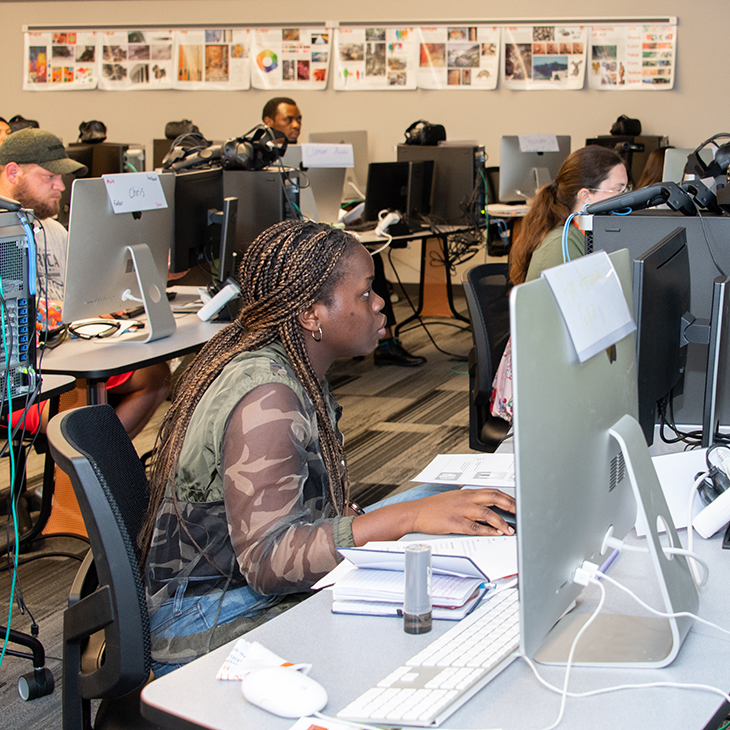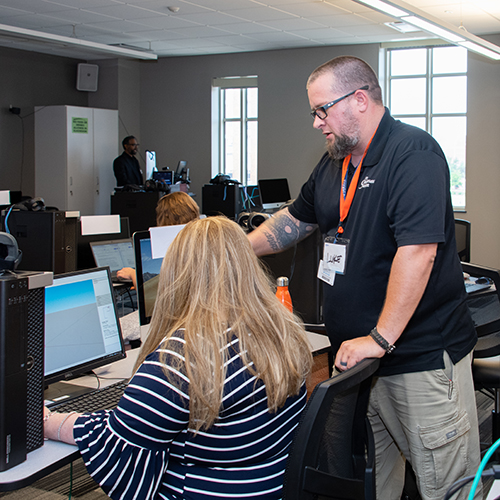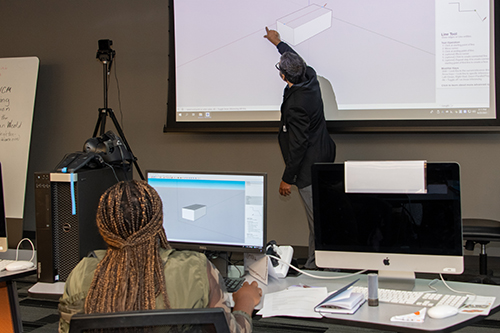
Making Students’ Thinking Visible
Thursday, November 4, 2021
Media Contact: Christy Lang | Marketing and Communications Manager | 405-744-9740 | christy.lang@okstate.edu
Innovative after-school program captures Native American students’ interest in STEM through special design
Virtual reality, augmented reality and 3D printing — hallmarks of the future — will now be used to help Native American students connect with their cultural past.
Through an innovative $1.5 million grant from the National Science Foundation, students from Chickasaw, Pawnee and Citizen Potawatomi Nation tribes will learn how to apply spatial design concepts through an after-school program led by Oklahoma State University professors, then craft building designs representing stories from their tribe’s culture.
After their designs are complete, students will “walk through” and experience the buildings using virtual and augmented reality.
“We hope to take what students already know naturally from their culture and use it to expand their understanding of STEM (science, technology, engineering and math) concepts,” said Dr. Tilanka Chandrasekera, associate professor in the Department of Design, Housing and Merchandising in OSU’s College of Education and Human Sciences.
Inspiration for the project comes from a concept known as genus loci, which Chandrasekera says is “the spirit of place.” Native American structures, such as round houses, demonstrate unique genus loci.
 “We’re looking at architectural and design-related problems and approaching it through
an Indigenous way of knowing,” Chandrasekera said. “We will discuss Native American
stories related to people and history, then challenge students to bring those stories
to life with their designs.”
“We’re looking at architectural and design-related problems and approaching it through
an Indigenous way of knowing,” Chandrasekera said. “We will discuss Native American
stories related to people and history, then challenge students to bring those stories
to life with their designs.”
Dr. Tutaleni Asino, associate professor of learning, design and technology, leads the project with Chandrasekera. He hopes that as students design buildings representing their tribal heritage, they will develop a passion for STEM-related careers. According to the Pew Research Institute, less than 3% of STEM workers are Native American.
“In the next five to 10 years, technologies like virtual reality and 3D printing will be ubiquitous in many professions, from medicine to engineering,” Asino said. “Being exposed to this at a young age can capture students’ interest in STEM.”
The three-year grant will enable Chandrasekera and Asino to work with each tribe for one year, conducting professional development workshops for teachers and hosting afterschool programs for students.
As students use augmented and virtual reality, as well as 3D printing, topics such as room dimensions and software programming come to life. Details typically challenging to visualize, like the shadows created by a light fixture and the dimensions of a curving staircase, will be easy to see with augmented and virtual reality, and complex projects like calculating staircase dimensions will be more realistic.
“It makes students’ thinking visible and learning more immersive,” Asino said. “They can visualize buildings that may not be accessible in the physical world.”
Dr. Norma Neely, a fifth-grade teacher at Shawnee (Oklahoma) Public Schools and an elder in the Citizen Potawatomi Nation, has worked closely with Asino and Chandrasekera.
“Programs like this are absolutely essential to Native American students who, too often, are among the last to experience the latest technology and STEM opportunities,” Neely said. “Exposure to this type of learning can foster interest and actually change career pathways.”
 Neely believes Native American communities have many strengths that can support and
augment the program.
Neely believes Native American communities have many strengths that can support and
augment the program.
“The close family kinship circles serve as safe places for students to be encouraged to experiment and follow individual interests,” she said. “In turn, the cultural connections like in this project reinforce and institutionalize the importance of students learning and enjoying these new skills in the context of their nation’s cultural beliefs and values.”
The NSF grant builds on previous work Chandrasekera has led for Native American communities. In 2018, a two-week summer camp provided Native American middle school students opportunities to experience STEM concepts firsthand. Asino, Chandrasekera and Nicole Colston, an assistant research professor with the water resource center at OSU, are adapting the summer camp curriculum for an afterschool format and sharing what they learned while teaching for teachers.
“The idea is not just to provide a one-time program and then leave,” Asino said. “To make it more sustainable, we are training teachers who can provide these lessons to even more students in their individual classrooms.”
This work/project was made possible by National Science Foundation grant No. 2048987.
Story By: Brittany Bowman | College of Education and Human Sciences
